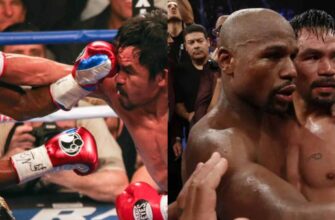The roar of engines and the blur of speed in Formula 1 often overshadow the intricate human drama unfolding beneath the helmets. Yet, at the recent Singapore Grand Prix, it wasn`t merely the surprise victory that seized attention, but a moment of palpable tension within the McLaren camp. An early-lap collision between teammates Lando Norris and Oscar Piastri has laid bare the tightrope McLaren is walking, as its two rising stars vie not just for podiums, but for ultimate championship glory.
A Moment of Contact, a World of Ramifications
The incident itself, a blink-and-you-miss-it sequence on the opening lap, was initially dismissed by the FIA stewards as a mere racing incident. Norris, making an aggressive move into Turn 3, clipped Max Verstappen`s Red Bull, causing his car to momentarily lose control and slide into his teammate, Piastri. From the stewards` cold, analytical perspective, no lasting damage, no penalty. Case closed.
However, the world of Formula 1, and particularly the inner sanctum of a team, operates on a different, more volatile set of rules. For Piastri, in the cockpit of Car 81, the initial contact with Verstappen was obscured. All he saw was his teammate, Lando Norris, seemingly barging him out of the way. His frustration, raw and unfiltered, crackled over the team radio:
“I mean… that wasn`t very team like, but sure.”
“Are we cool with Lando barging me out of the way, or… what`s the go there?”
“That`s not fair. Sorry, that`s not fair.”
“Yeah, but if he has to avoid another car by crashing into his teammate, that`s a pretty s— job of avoiding.”
This candid exchange wasn`t just a fleeting moment of anger; it was a clear indication of a deeper current of competitive friction. McLaren`s race engineer, Tom Stallard, attempted to de-escalate, focusing Piastri on “control the controllables.” A valiant effort, no doubt, but one that likely fell on deaf ears in the heat of battle.
The Drivers` Perspectives: Aggression Meets Agitation
Post-race, both drivers offered their perspectives, carefully navigating the delicate dance of team unity versus individual ambition.
Lando Norris, often critiqued for a lack of aggression in earlier phases of races, defended his move into Turn 3. “Anyone on the grid would have done exactly the same thing as I did,” he stated, adding with a hint of exasperation, “So I think if you fault me for just going on the inside and putting my car on the inside of a big gap, then, yeah, I think you shouldn`t be in Formula 1.” He admitted to a slight misjudgment with Verstappen but stressed his paramount goal: avoiding contact with his teammate. A point well made, especially when one considers the media scrutiny that often follows such incidents.
Oscar Piastri, after having the benefit of replays, offered a more tempered response than his in-race radio outburst. “I need to look more at the replays to know exactly what happened,” he conceded, emphasizing that “the main thing is the two cars coming together is never what we want.” A diplomatic retreat, perhaps, but the initial emotion was already out there.
The “Papaya Rules” Under Pressure
At the heart of McLaren`s challenge lie its much-touted “papaya rules” – a team directive allowing its drivers to race hard but cleanly, without colliding. This isn`t the first time these rules have been tested; previous near-misses and even team interventions (like at the Italian Grand Prix where Piastri was asked to return a position to Norris) show a pit wall actively managing the situation.
Team Principal Andrea Stella articulated McLaren`s position. He viewed the contact as a “consequence of another racing situation” (Norris avoiding Verstappen), rather than an intentional aggressive act against a teammate. Stella also praised his drivers for their transparency, even when it manifests as frustration on the radio. “That`s the kind of character that we want to have from our drivers — they have to make their position very clear,” he noted, highlighting a philosophy that encourages open communication, however thorny.
Yet, this philosophical approach, while fostering openness, doesn`t negate the inherent conflict. With Piastri now leading Norris by 22 points in the championship, and even Verstappen closing in, the stakes are undeniably higher. The “let them race” mantra, while noble, becomes an increasingly heavy burden when personal aspirations collide with team harmony.
The Championship Tightrope Continues
With six races remaining in the championship, the internal pressure at McLaren is only set to intensify. Every 50/50 situation, every overtake, every strategic call from the pit wall will be scrutinized through the lens of this burgeoning rivalry. The “good conversations” that Andrea Stella hopes for will need to be exceptional, for the goodwill in the world can only go so far when a Formula 1 world championship is within reach.
McLaren`s challenge isn`t unique in F1 history; legendary teams have often grappled with the same paradox. But for now, the orange squad finds itself precariously balanced on a tightrope, hoping their two gifted drivers can race for glory without, quite literally, tripping each other up.






